So what is it that you do?
As Nick Sunderland of Heavenly struggles elsewhere in these pages to work out what is meant by the word ’design’, Design Week kicks off a campaign to gain greater recognition for our industry by asking some leading lights to come up with their own definitions

The essence of design is the simple desire to make life better/ easier, more understandable and more enjoyable. For us designers it’s all about using our skills, expertise, insight and ingenuity to create something that adds value in some shape or form, and helps make life that little bit better than it was.
Katja Thielen, Creative director, Together
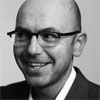
If design means making a process faster, more efficient, easier and more cost-effective, let it rest at that. If design can also add beauty and happiness, all the better. Design can result in a hospital visit being less stressful. That may come from better public transport, wayfinding, appointment processes, equipment and even the colour of the walls in the waiting room. Being a designer can mean many things. I can’t draw to save my life, but I know, and can visualise, what makes a place feel great to be in. I know the kind of spatial layouts and experiences that make people happy. A designer can also be someone who can ’draw for England’ and has a way with colour and pattern. Long may design be a broad church, and impossible to define in a few words.
Wayne Hemingway, Founder, Hemingway Design
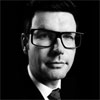
Design is the word for the process of finding a solution to a problem that requires a new idea. Design isn’t art. It is a response. Design requires a problem and therefore a brief. Design carries the intention to improve. That’s not to say it is always good in its intentions. Design can improve the profits of tobacco companies as well as create a bagless vacuum cleaner. It’s a business that can turn around businesses. It improves products, creates better services, makes organisations more profitable (and more fun). It’s open to anyone who can embrace the one thing that frightens most people most of all – change. Design is simply the process of finding a creative solution to a problem. Design isn’t itself the problem, it’s the way to find an answer, but change lies at the heart of design, and that is often the hardest thing to manage.
Simon Manchipp, Founder, Someone

It’s humbling to look around you and know you’re seeing design – the street signage, the Tarmac, the cars, our towns and cities. The world as
we see it has been shaped by designers. That’s pretty powerful, and a heavy responsibility. My mind has been trained to revere the process above all else. Without a design process, you have nothing. A piece of work created through aesthetics alone, in my book, doesn’t hold up. And, incidentally, my book isn’t that big – I have key things I work to as a designer. The big question/ why? Why do we create, and why are we creating it in this way? It’s wonderfully simple, and hideously complex at the same time. The minute we ask this question, there comes an outpouring of other, more complicated questions. To begin to define design, I think we have to look at what it can achieve, and understand its potential.
Lizzie Mary Cullen, Illustrator
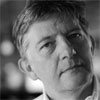
The key thing about design is that it is about the way we earn our living, and also about the way we live our lives. It is what reflects our values and shapes the way the rest of the world sees us. We can’t be complacent – many nations see themselves as creating the next world centre for design. But at the moment, the fact that Thomas Heatherwick’s UK pavilion at the Shanghai Expo was such a success, or that Zaha Hadid is building around the world, or that Arup engineers are in demand everywhere, demonstrates our skills, and the value of our designs and designers. With a strong design sector, Britain is at the centre of things, not at the periphery, reduced to a mere consumer of objects made and shaped somewhere else.
Deyan Sudjic, Director, Design Museum

We’ve always defined design as ’making things better for people’, with the emphasis on ’things’ and ’people’. And as such, this is both a definition and a philosophy. As ’receivers’ of design, we’re seeking delight and engagement, clarity and functional reliability, self-expression and definition. As ’creators’ of design, we’re seeking the unexpected, relevant solution. As ’buyers’ of design, we’re seeking increased profit and reputation. Design isn’t art. Nor is it a science. It weaves the artistic and the practical together to create two types of functionality/ technical functionality and emotional functionality. And the best design possesses both, in spades.
Richard Seymour, Co-founder, Seymour Powell

Design is an intellectual process to manifest ideas. Design produces objects that we enjoy using, physically or mentally. No time for dross -18 words. I know this won’t do as an explanation at dinner parties, but then I always add examples/ hold up a good knife that works against one that doesn’t; flip through a magazine that isn’t inviting to read (and mention we designed The Economist ten years ago) and show one that is; point to a ticket machine that makes you want to kick it and remind people of the effortless process of traveling with an Oyster card (once you know where and how to get one). Product design, editorial design, process design. I could go on. Everyone has good and bad examples, from insurance claims (deliberately difficult to understand) to a paper clip (obvious in use and function).
Erik Spiekermann, Creative director and managing partner, Eden Spiekermann Berlin
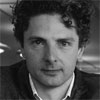
Design is the act of reimagining and crafting all the things around you – products, services, spaces, communications. Good design transforms the frustrating into the sublime, the broken into the fixed, the also-ran into the ’must-have’ in an economically and environmentally sustainable way. The amazing thing is that so many things can be reimagined/ the hospital equipment that keeps superbugs at bay, the mobile phone products that thwart thieves, the service that helps dementia sufferers to know where to turn to for help. Design both uncovers the opportunity and crafts the solution. The need to reinvent our world has never been more necessary. Design is vital.
Mat Hunter, Chief design officer, Design Council

My co-director says it’s a kick in the nuts followed by a boot in the teeth. He followed that by saying, ’It’s what we had before all these bollocks “creatives” jumped on the bandwagon’. The £5 answer is that ’design is a creative process that controls the evolution of ideas’. I’d go on to illustrate examples within a commercial context, because the subject is so wide that people only grasp its universal application when you illustrate how it benefits them.
Janice Kirkpatrick, Director, Graven Images

I don’t really understand the question. The key issue today is how can designers in any field formulate an appropriate response to such a turbulent world? Being inward-looking and trying to build a defined space is not enough – engaging with what is going on around us is the only way we can identify our roles. Also, specific titles like ’graphic designer’ no longer exist. We have to be multi-capable and flexible now, in order to be equipped to build the world that we will be asked to build.
Neville Brody, Founder, Research Studios

Design is everything and everything is designed. It’s a complex subject that defies a soundbite definition. So, what is design? Well, here’s an Aristotelian interpretation/ design is everything, being the sum total of human memory and experience; designing is the practical application of this inheritance through logical reasoning, to produce something of the best possible use, while ensuring that morally acceptable ends are achieved by moral means.
Rodney Fitch, Consultant
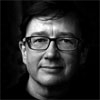
These days design has become a nebulous word applying to anything from jeans to genes, because it can include fashion, graphics, product, interface, engineering, building, pharmaceuticals, genetics and so on. I understand it more as a verb than a noun, and tend to define it as anticipatory activity requiring the creative application of common sense, imagination and experience. Although I believe that the real purpose of design is to create value in the mind of the user, whether it is a physical object, graphics or a service. I usually describe myself as a designer/inventor, which was my childhood aspiration, and focus on creating aspirational retail merchandise – if you can buy it in The Conran Shop I will have a go at designing it.
Sebastian Conran, Founder, Sebastian Conran Associates
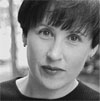
I am not convinced design needs to be defined. One of its greatest strengths is diversity. Throughout design history, designers have constantly reinvented their roles as society’s needs have changed and new challenges have emerged. We are now experiencing changes of unprecedented speed and scale, which makes design’s diversity more valuable than ever.
Alice Rawsthorn, Design critic, International Herald Tribune





For me design is the midpoint between aesthetic art and engineric function. It has structure and real purpose and follows a morphology to an outright, but short lived solution. It is the path between being creative and having created. It is an attitude to persue betterment for the betterment of others.